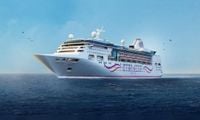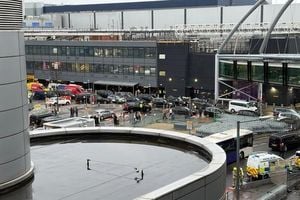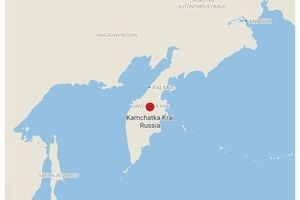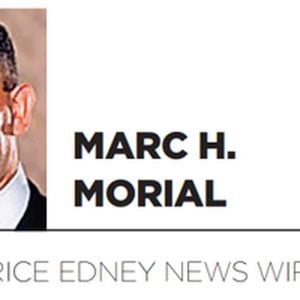On August 18, 2025, Mumbai will become the epicenter of India’s cruise tourism ambitions, as the city hosts the national conference Waterways to Wonder: Unlocking Cruise Tourism. Organized by the Mumbai Port Authority in close partnership with the Inland Waterways Authority of India (IWAI) and the Indian Ports Association, the conference is poised to set a new course for India’s maritime and tourism sectors.
This high-profile event will draw together senior policymakers, industry leaders, maritime experts, and representatives from the Ministry of Tourism, Maharashtra Tourism Development Corporation (MTDC), central agencies, and state departments. The agenda is ambitious: to chart a path that positions India as a global hub for cruise tourism, while keeping sustainability, technological innovation, and inclusive development front and center.
According to CNBC TV18, the conference will be a vibrant forum for policy innovation, regulatory frameworks, and strategic planning. The event’s sessions will cover everything from global best practices in cruise terminal management to the integration of digital and smart technologies in port operations. But perhaps most notably, the conference will shine a spotlight on how India can balance commercial expansion with the urgent need for green, eco-resilient infrastructure.
A major highlight of the day will be a presentation by NAVIC Cell 4, a specialized division under the Ministry of Ports, Shipping and Waterways (MoPSW). This unit has been tasked with advancing river-based, coastal, and lighthouse-linked tourism, while also promoting ferry connectivity and the creation of cruise circuits that weave together cultural, coastal, and eco-tourism experiences. As the unit succinctly put it, The vision is to make India a global hub for cruise tourism by creating sustainable cruise circuits.
Vijay Kumar, Chairman of IWAI and head of NAVIC Cell 4, will deliver the keynote address. Under his stewardship, IWAI has played a pivotal role in strengthening inland waterway transport and cruise connectivity. His focus has been unwavering: eco-friendly infrastructure, policy innovation, and technological advancement. According to the official conference agenda, Kumar’s address will set the tone for a day packed with presentations, panel discussions, and cross-sector dialogues.
One of the core themes running through the conference is the integration of climate-conscious planning into every facet of cruise tourism. From adopting clean energy systems and advanced waste management technologies to encouraging low-emission shipping models, the event aims to foster a culture of sustainability. As reported by The Hindu BusinessLine, industry experts are adamant that India can only compete with established cruise destinations if green corridors, digital innovation, and resilient infrastructure become non-negotiable priorities.
The conference will also examine how cruise tourism can serve as an economic multiplier—especially for India’s tier-two and tier-three cities. By connecting these regions through inland waterways and coastal circuits, the sector has the potential to generate livelihoods in tourism, hospitality, and ancillary services. Local economies stand to benefit from increased demand for handicrafts, regional cuisine, and immersive cultural experiences. As one industry analyst explained, Cruise tourism could boost demand for local handicrafts, cuisine, and cultural experiences, positioning India’s ports as gateways to immersive travel rather than mere transit points.
But the event isn’t just about blue-sky thinking. It will also serve as a crucial preview to India Maritime Week 2025, scheduled for October. That larger gathering is expected to highlight global partnerships and investment opportunities, further cementing India’s commitment to modernizing its maritime sector. The government’s broader strategy includes modernizing ports through Public-Private Partnership (PPP) models, with a clear target: raising cargo handling capacity from 2,760 million tonnes per annum (MTPA) to 3,500 MTPA by 2030—and scaling up to a staggering 10,000 MTPA by 2047.
The stakes are high. According to officials, the dedicated unit under the Ministry of Ports, Shipping and Waterways has already been working to promote ferry connectivity and create cruise circuits that integrate not just leisure travel, but also cultural and eco-tourism experiences. Their vision is clear: build climate-conscious circuits that respect fragile ecosystems while enhancing passenger experience. This is no small feat, especially in a country as vast and ecologically diverse as India.
Sessions throughout the day will dig into the nitty-gritty of cruise tourism strategy and regulatory levers. There will be deep dives into the development of themed cruise circuits, frameworks for regulatory and operational mechanisms, and the adoption of smart and green port operations. Panelists will also dissect global best practices in cruise terminal management, with an eye toward adapting these lessons to the Indian context.
Participants at the conference are expected to deliberate on how India can build eco-resilient infrastructure. This means balancing the pressures of commercial expansion with the imperatives of sustainable practices. As The Economic Times notes, there’s a growing consensus that green port development—adopting clean energy systems, deploying advanced waste management technologies, and shifting toward low-emission shipping models—must be at the heart of India’s cruise tourism push.
For many attendees, the conference is more than just a meeting of minds; it’s a call to action. The integration of digital and smart technologies in port operations is seen as a game-changer, offering the potential to streamline processes, reduce emissions, and improve the overall passenger experience. The hope is that by leveraging these tools, India can leapfrog traditional barriers and establish itself as a world-class cruise destination.
Of course, the journey won’t be without challenges. Experts point out that for cruise tourism to truly succeed, India must weave sustainability into the very fabric of its maritime planning. This means not only building new infrastructure but also retrofitting existing ports and terminals to meet the highest environmental standards. As one senior official put it, The conference in Mumbai is therefore seen not just as a dialogue on tourism but as a roadmap for a climate-resilient maritime future.
In the end, the Waterways to Wonder conference represents both a bold vision and a pragmatic blueprint. By bringing together the country’s top minds in tourism, shipping, and infrastructure, the event is setting the stage for India to unlock its vast cruise tourism potential—while ensuring that economic growth and environmental stewardship go hand in hand. As the country looks toward India Maritime Week 2025 and beyond, all eyes will be on Mumbai to see whether this ambitious vision can be transformed into lasting, sustainable progress.




